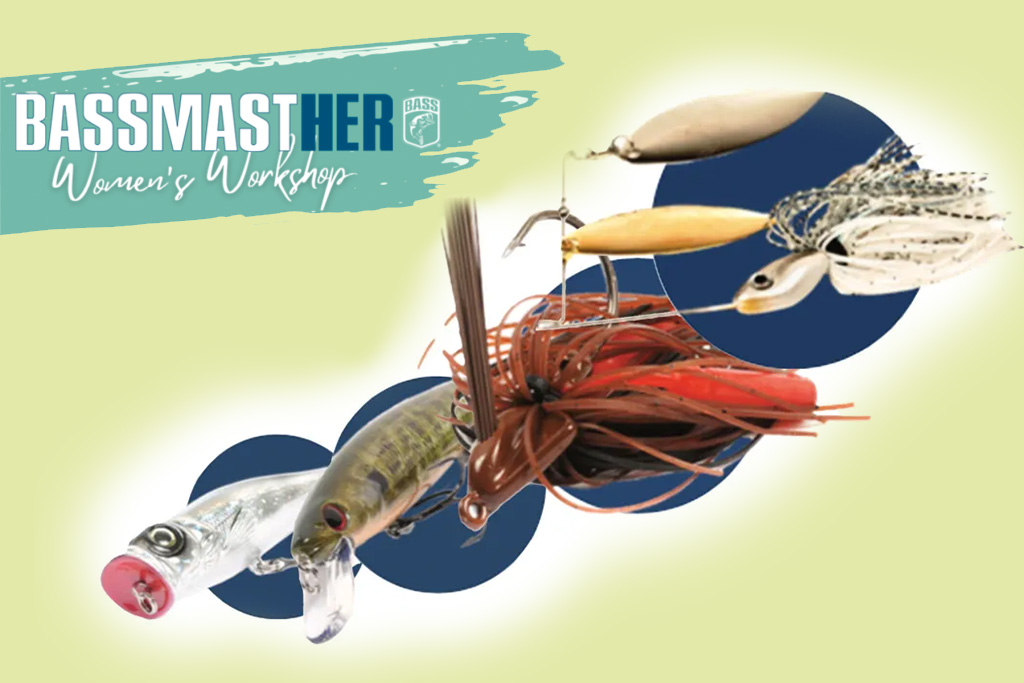
Hard baits, known for their durable, solid designs, mimic the movement and appearance of prey fish and other creatures that bass love to eat.
As a beginner, learning how these different baits behave will help you decide when and where to use them. Let’s dive into five essential hard baits: topwater baits, jerkbaits, spinnerbaits, crankbaits, and jigs, and understand how they move and why bass can’t resist them.
Topwater Baits
Topwater baits are some of the most exciting lures to use because the action happens right on the surface of the water, giving you thrilling visual strikes from bass. These baits imitate the movements of frogs, insects, or wounded baitfish struggling on the water’s surface, which attracts aggressive, hungry bass.

- Movement: Topwater baits skim across the surface of the water in a horizontal motion as you retrieve them.
- When to Use: These baits work best in calm, shallow water, especially early in the morning or late in the evening when bass are hunting near the surface.
- Pro Tip: Use a steady retrieve or a “stop-and-go” technique to create splashes and ripples, mimicking the erratic behavior of struggling prey.
Jerkbaits
Jerkbaits are long, slender lures designed to imitate baitfish like minnows or shad. Their unique darting and diving action triggers reaction strikes from bass, particularly in cooler water when fish are more sluggish.

- Movement: Jerkbaits dive downward and then dart upward in a rhythmic, jerking motion. This up-and-down pattern imitates an injured fish.
- When to Use: These baits shine in clear water, and they are great for covering a lot of water quickly. Use them during cooler months or when bass are suspended in mid-depth ranges.
- Pro Tip: Experiment with pauses between jerks—sometimes, bass strike during the momentary stillness of the bait.
Spinnerbaits
Spinnerbaits are versatile, flashy lures that can attract bass in a variety of conditions. Their spinning blades create both flash and vibration, mimicking a school of small fish or a single large baitfish. These lures are particularly good at drawing strikes from bass hiding in cover.

- Movement: Spinnerbaits initially drop deep and then rise as you retrieve, with the blades spinning to create vibrations and flash.
- When to Use: These baits are ideal for murky or stained water and can be fished around structures like logs, vegetation, or docks where bass often hide.
- Pro Tip: Use a slow and steady retrieve or try “bumping” the bait into underwater structures to trigger reaction strikes from bass hiding in cover.
Crankbaits
Crankbaits are designed to dive deep as they are retrieved, making them excellent for targeting bass that are holding near the bottom. These baits come in various shapes and sizes, each designed to dive to a specific depth.

- Movement: Crankbaits dive deep and swim in a wobbling or rolling motion, mimicking baitfish that are swimming at depth.
- When to Use: Crankbaits are best used when bass are holding deep, such as in mid-summer or late fall. They work especially well in lakes with steep drop-offs or underwater ledges.
- Pro Tip: Choose a crankbait with a diving depth that matches the water depth you’re fishing. Let the bait bounce off the bottom or structure for added appeal.
Jigs
Jigs are among the most versatile and effective lures in bass fishing. They are usually paired with soft plastic trailers that mimic crawfish, baitfish, or other prey. Jigs excel at targeting bass holding close to the bottom or in heavy cover.

- Movement: Jigs stay deep and move along the bottom as you retrieve them, mimicking a crawling or fleeing prey.
- When to Use: Jigs are perfect for fishing in heavy cover, such as under docks, in thick vegetation, or along rocky bottoms. They work year-round, but especially well in colder water when bass are less active.
- Pro Tip: Try “hopping” or “dragging” your jig across the bottom slowly to mimic a fleeing crawfish or a slow-moving baitfish. The slow, methodical presentation can trigger big bites from large bass.
Final Thoughts
Hard baits are a key part of any angler’s tackle box. Whether you’re using a topwater bait for surface strikes or a crankbait to reach deep-holding bass, each lure has its place and purpose. By learning how each type moves and when to use it, you’ll increase your chances of landing more bass and mastering your fishing techniques.





